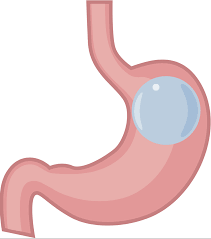Introduction to Gastric Balloon Surgery
Gastric balloon surgery is gaining popularity as a non-surgical weight loss option for individuals struggling with obesity. This procedure involves placing a soft balloon in the stomach to reduce its capacity, helping patients feel fuller with smaller meals. Gastric Balloon Surgery(وضع بالون المعدة في الرياض) offers an effective alternative to traditional weight loss methods, providing significant results without invasive surgery.

Understanding the Procedure
The Gastric Balloon Surgery procedure begins with a consultation and thorough medical evaluation to determine candidacy. During the procedure, the deflated balloon is inserted orally and then inflated with a sterile saline solution once it reaches the stomach. This process typically takes about 20 to 30 minutes and is performed under mild sedation or anesthesia to ensure patient comfort.
Mechanism of Action
Once in place, the balloon occupies space in the stomach, limiting the amount of food it can hold. This restriction leads to a feeling of fullness even with smaller portions of food. Patients are advised to follow a specific diet and exercise plan tailored to their needs to maximize weight loss results. Gastric Balloon Surgery acts as a temporary aid, usually remaining in the stomach for six months to a year before removal.
Benefits of Gastric Balloon Surgery
- Effective Weight Loss: Studies show that patients can achieve significant weight loss, often between 10% to 15% of their initial body weight.
- Non-surgical Approach: Unlike traditional weight loss surgeries like gastric bypass or sleeve gastrectomy, Gastric Balloon Surgery does not involve any incisions or alterations to the digestive system.
- Quick Recovery: Recovery time is minimal, with most patients resuming normal activities within a few days after the procedure.
Considerations Before Choosing Gastric Balloon Surgery
Before opting for Gastric Balloon Surgery, it's essential to consider various factors, including:
- Medical Evaluation: Candidates should undergo a thorough medical assessment to ensure they are suitable for the procedure.
- Commitment to Lifestyle Changes: Long-term success depends on adopting healthy eating habits and regular physical activity.
- Temporary Nature: The balloon is not a permanent solution and requires removal after the designated period.
Potential Risks and Complications
While generally considered safe, Gastric Balloon Surgery may involve risks such as nausea, vomiting, or balloon deflation requiring early removal. It's crucial for patients to discuss potential complications with their healthcare provider and adhere to post-operative guidelines for optimal safety and outcomes.
Post-Procedure Care and Monitoring
Following Gastric Balloon Surgery, patients receive ongoing support from healthcare professionals to monitor progress and provide guidance. Dietary counseling and lifestyle modifications are integral to maintaining weight loss results beyond the balloon's removal.
Success Rates and Patient Experiences
Many patients report successful weight loss and improved quality of life following Gastric Balloon Surgery. Success rates vary based on individual adherence to post-operative guidelines and commitment to long-term health.
Conclusion
In conclusion, Gastric Balloon Surgery offers a viable option for individuals seeking effective weight loss without undergoing invasive surgery. Understanding its procedure, benefits, and considerations can empower individuals to make informed decisions about their health and well-being. Consulting with a qualified healthcare provider is crucial to determine if Gastric Balloon Surgery aligns with one's weight loss goals and overall health objectives.
